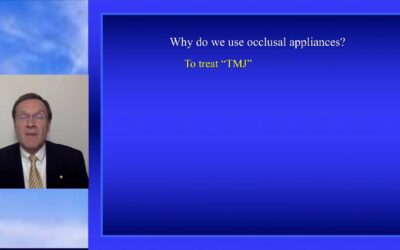Duration: 51 minutes, 11 seconds
Author: Prof. Mariano Sanz
I. Introduction A. Importance of key decision factors in implant placement in fresh extraction sockets B. Role of understanding biological factors and clinical outcomes II. Changes to the Alveolar Ridge after Dental Extractions A. Apical coronal and bucolingual reduction B. Impact on ideal anatomy for implant placement III. Therapeutic Possibilities after Tooth Extraction A. Socket preservation B. Immediate implant placement C. Waiting for soft tissue healing before augmentation and implant placement D. Allowing complete healing of the ridge before implant placement IV. Evaluation of Ridge Preservation Procedures A. Systematic review of available evidence B. Assessing efficacy in implant placement V. Conclusion VI. FAQs 1. What are the key decision factors in implant placement after tooth extraction? 2. How do changes to the alveolar ridge affect implant placement? 3. What are the therapeutic possibilities after a tooth extraction? 4. How is the efficacy of ridge preservation procedures evaluated? 5. What are the clinical outcomes of immediate implant placement? Article: Implant Placement in Fresh Extraction Sockets: Key Decision Factors Introduction When it comes to implant placement in fresh extraction sockets, there are several key decision factors to consider. In this article, we will explore the importance of understanding the biological factors and clinical outcomes in determining whether to place an implant immediately after a tooth extraction or wait for the appropriate time. Changes to the Alveolar Ridge after Dental Extractions Dental extractions not only remove the tooth but also result in changes to the alveolar ridge. These changes include apical coronal and bucolingual reduction, which can significantly impact the ideal anatomy for implant placement. It is crucial to assess these changes and their implications before deciding on the appropriate course of action. Therapeutic Possibilities after Tooth Extraction There are four main therapeutic possibilities after a tooth extraction. Firstly, socket preservation involves preserving the socket after extraction to maintain the ideal conditions for future implant placement. Secondly, immediate implant placement involves placing the implant right after the extraction, taking advantage of the existing socket and minimizing the need for additional procedures. Alternatively, some cases may require waiting for soft tissue healing before proceeding with augmentation and implant placement. This approach allows for optimal tissue regeneration and ensures better outcomes in the long run. Lastly, there is the option of allowing complete healing of the ridge before considering implant placement. This approach may be suitable for cases where the alveolar ridge has undergone significant changes and requires time to regenerate. Evaluation of Ridge Preservation Procedures The efficacy of ridge preservation procedures in implant placement is currently under evaluation through a systematic review. This review aims to assess the available evidence and determine the optimal protocols and techniques for ridge preservation. By understanding the effectiveness of these procedures, dental professionals can make informed decisions regarding implant placement in fresh extraction sockets. Conclusion Implant placement in fresh extraction sockets requires careful consideration of various key decision factors. Understanding the changes to the alveolar ridge, the therapeutic possibilities after tooth extraction, and the efficacy of ridge preservation procedures is crucial in achieving successful outcomes. By taking into account biological factors and clinical evidence, dental professionals can make informed decisions that maximize the chances of a successful implant placement. FAQs 1. What are the key decision factors in implant placement after tooth extraction? Key decision factors include understanding the changes to the alveolar ridge, evaluating therapeutic possibilities, and considering the efficacy of ridge preservation procedures. 2. How do changes to the alveolar ridge affect implant placement? Changes to the alveolar ridge, such as apical coronal and bucolingual reduction, can impact the ideal anatomy for implant placement and influence the decision-making process. 3. What are the therapeutic possibilities after a tooth extraction? The therapeutic possibilities include socket preservation, immediate implant placement, waiting for soft tissue healing before augmentation and implant placement, or allowing complete healing of the ridge before implant placement. 4. How is the efficacy of ridge preservation procedures evaluated? The efficacy of ridge preservation procedures is assessed through systematic reviews that examine the available evidence and determine the effectiveness of different protocols and techniques. 5. What are the clinical outcomes of immediate implant placement? The clinical outcomes of immediate implant placement vary depending on the case, but studies have shown promising results with high success rates and improved patient satisfaction.





Add comment